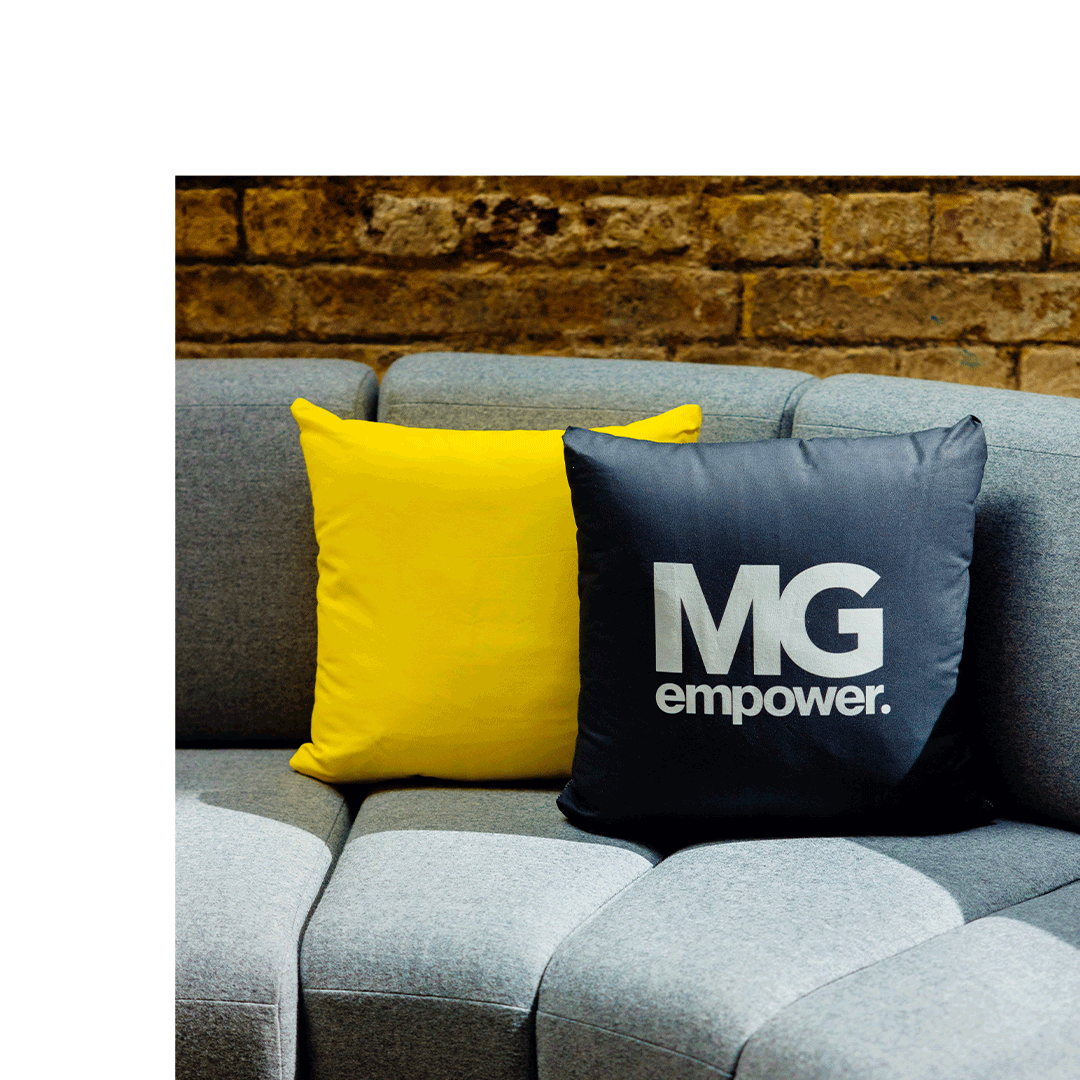- Who we are
-
Who we are.
 About us.Discover where we came from and who we are today.
About us.Discover where we came from and who we are today. Why us.Our team and ways of working make us special. Find out why.
Why us.Our team and ways of working make us special. Find out why. Impact.Our mission, vision and D&I statement live here.
Impact.Our mission, vision and D&I statement live here.Latest.
 Content In Focus: Audio, AI and Tech Integrations for Creators.In the ever-changing world of content creation, it can be difficult to keep up. So, here are three key predictions for 2024 from someone who’s constantly got one eye on the present and the other on the future: our Creative Media Director, Jake Davis.Read more
Content In Focus: Audio, AI and Tech Integrations for Creators.In the ever-changing world of content creation, it can be difficult to keep up. So, here are three key predictions for 2024 from someone who’s constantly got one eye on the present and the other on the future: our Creative Media Director, Jake Davis.Read more 2023: A Year of New Beginnings.Explore MG Empower's transformative journey in 2023, a year of milestones and innovation. From reaching 41.7 million globally to a renaissance marked by expanded services, join us in gratitude for a successful year.Read more
2023: A Year of New Beginnings.Explore MG Empower's transformative journey in 2023, a year of milestones and innovation. From reaching 41.7 million globally to a renaissance marked by expanded services, join us in gratitude for a successful year.Read more
-
- Work
-
Case studies.
 Barbie x Tangle TeezerMaking the Barbie x Tangle Teezer brush iconic with a 360° social and IRL campaign.
Barbie x Tangle TeezerMaking the Barbie x Tangle Teezer brush iconic with a 360° social and IRL campaign. Fujifilm: X-S20Creating a hero video to launch a new camera, designed for content creators.
Fujifilm: X-S20Creating a hero video to launch a new camera, designed for content creators. Genesis #MakeTheGameYourOwnDriving brand affinity and awareness by tapping into niche audiences for Genesis.
Genesis #MakeTheGameYourOwnDriving brand affinity and awareness by tapping into niche audiences for Genesis.This month's highlights.
-
- Insights
-
Insights and inspiration.
 Stories.Quick, easy reads about things we’ve been thinking, feeling and analysing lately. Get scrolling to keep up.
Stories.Quick, easy reads about things we’ve been thinking, feeling and analysing lately. Get scrolling to keep up. Podcast.#BeyondMarketingThePodcast is your key to the fast-paced world of integrated marketing and beyond.
Podcast.#BeyondMarketingThePodcast is your key to the fast-paced world of integrated marketing and beyond. White Papers.Our researchers combine qualitative, investigative, and cultural analysis to tell stories brands need to hear.
White Papers.Our researchers combine qualitative, investigative, and cultural analysis to tell stories brands need to hear.Latest.
 Content In Focus: Audio, AI and Tech Integrations for Creators.In the ever-changing world of content creation, it can be difficult to keep up. So, here are three key predictions for 2024 from someone who’s constantly got one eye on the present and the other on the future: our Creative Media Director, Jake Davis.Read more
Content In Focus: Audio, AI and Tech Integrations for Creators.In the ever-changing world of content creation, it can be difficult to keep up. So, here are three key predictions for 2024 from someone who’s constantly got one eye on the present and the other on the future: our Creative Media Director, Jake Davis.Read more 2023: A Year of New Beginnings.Explore MG Empower's transformative journey in 2023, a year of milestones and innovation. From reaching 41.7 million globally to a renaissance marked by expanded services, join us in gratitude for a successful year.Read more
2023: A Year of New Beginnings.Explore MG Empower's transformative journey in 2023, a year of milestones and innovation. From reaching 41.7 million globally to a renaissance marked by expanded services, join us in gratitude for a successful year.Read more
-
- Connect
Telling brand stories.
End-to-end influencer marketing strategies. We tap into audiences by connecting the dots between your brand and creators who are good at telling your story.
Amplifying stories in every direction.
A fully integrated media approach to support consumers on the path to conversion. We develop and amplify meaningful media campaigns that provide measurable impact.
Bringing stories to life.
Our in-house creative hub produces immersive experiences and groundbreaking content, bringing your brand’s story to life in real and virtual worlds.
The data behind the stories.
Our proprietary tech platform uses AI and ML-generated insights and advanced analytics to help you tap into your digital ecosystem.
Co-create your next solution, fast.
Our bespoke co-creation service helps brands and businesses innovate quickly by activating a three-day immersive workshop with an all-star team of collaborators.


![Mememarketing[1]](https://mgempower.com/wp-content/uploads/2022/10/Meme20marketing1-200x200.png)








